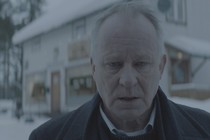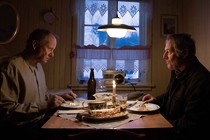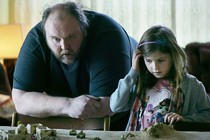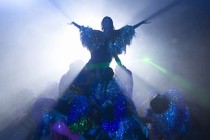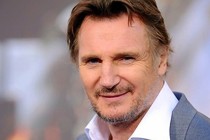In Order of Disappearance: Moland counts the dead
- The third film presented by the Norwegian director in competition in Berlin chalked up lots of victims in the audience, who all died laughing
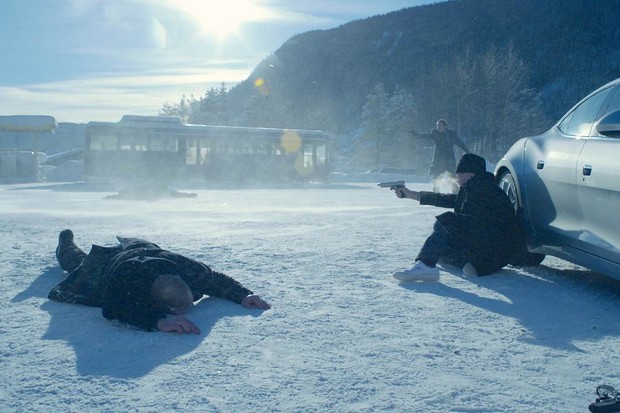
After two rather difficult films shown in last couple of days at the Berlinale's competition section, Norwegian director Hans Petter Moland, competing for the third time for the Golden Bear, has come to maturity with the delicious In Order of Disappearance [+see also:
trailer
interview: Hans Petter Moland
film profile]. Here, we are treated to his unique talent for staging the world of crime and gangsters with priceless Scandinavian humour, both caustic and unbridled, without giving up the violence that goes hand in hand with the genre, but without taking it seriously – and how could he have made such an error, when his sinister criminals themselves have American action movies as their reference, from which many of them borrow outlandish nicknames (Rodrigo, Wingman, Chinaman – it should be said to the latter's credit that his real name is Takeshi Klaas Nielsen!).
Nor does Moland sacrifice the quality of the photography, capturing the immense and fascinating snow-covered landscapes which are the day-to-day backdrop of Nils Dickman (Stellan Skarsgård), whose job is to drive enormous snow blowers. However, it is another kind of white powder which will suddenly transform this "exemplary citizen of the year" into a killing machine. When his son falls victim to a gang of coke dealers, his hyperbolical revenge consists of taking them out one by one, until he reaches the top of the ladder and eliminates "the Count" (Pal Sverre Haagen), a mafia boss and father of a family who combines crime and affectation with hilarious nonchalance. It is, in fact, his role as a father that endows this character with his most delectable contradictions: this male, vegan "Cruella" who surrounds himself with ridiculous modern art and shows a marked predilection for sweets and pink ribbons has no hesitation in taking out personally anyone who gets in his way (other gangs like his own), and loses it completely when his henchmen forget to bring the five different fruits recommended for his son's tea.
While Dickman patiently continues to lay the Count's gang to waste, the boy to whom the Count pays so much attention becomes the centre of other killings, much less methodical, even though they are justified by the law of an eye-for-an-eye (contrary to the vengeance carried out by Nils, more reminiscent of Kill Bill than a resetting of the balance): because in the meantime, a Serbian gang has joined the fray, and its boss (Bruno Ganz) is not the kind to content himself with a decapitated head in pretty gift wrapping. The spectacular orgy of violence which follows (one almost gets lost in the tags that account for the corpses!) indeed recalls Tarantino's carnival-style approach, while the Norwegian climate gives rise, as in the films of the American maestro, to delightfully absurd "car dialogues". But until the very end (the final scene is as ingenious as it is screamingly funny), we recognise at all times the black, more-Nordic-than-this-you-die humour of the excellent Danish screenwriter Kim Fupz Aakeson. A real treat, with neither additives nor preservatives.
(Translated from French)
Did you enjoy reading this article? Please subscribe to our newsletter to receive more stories like this directly in your inbox.

















